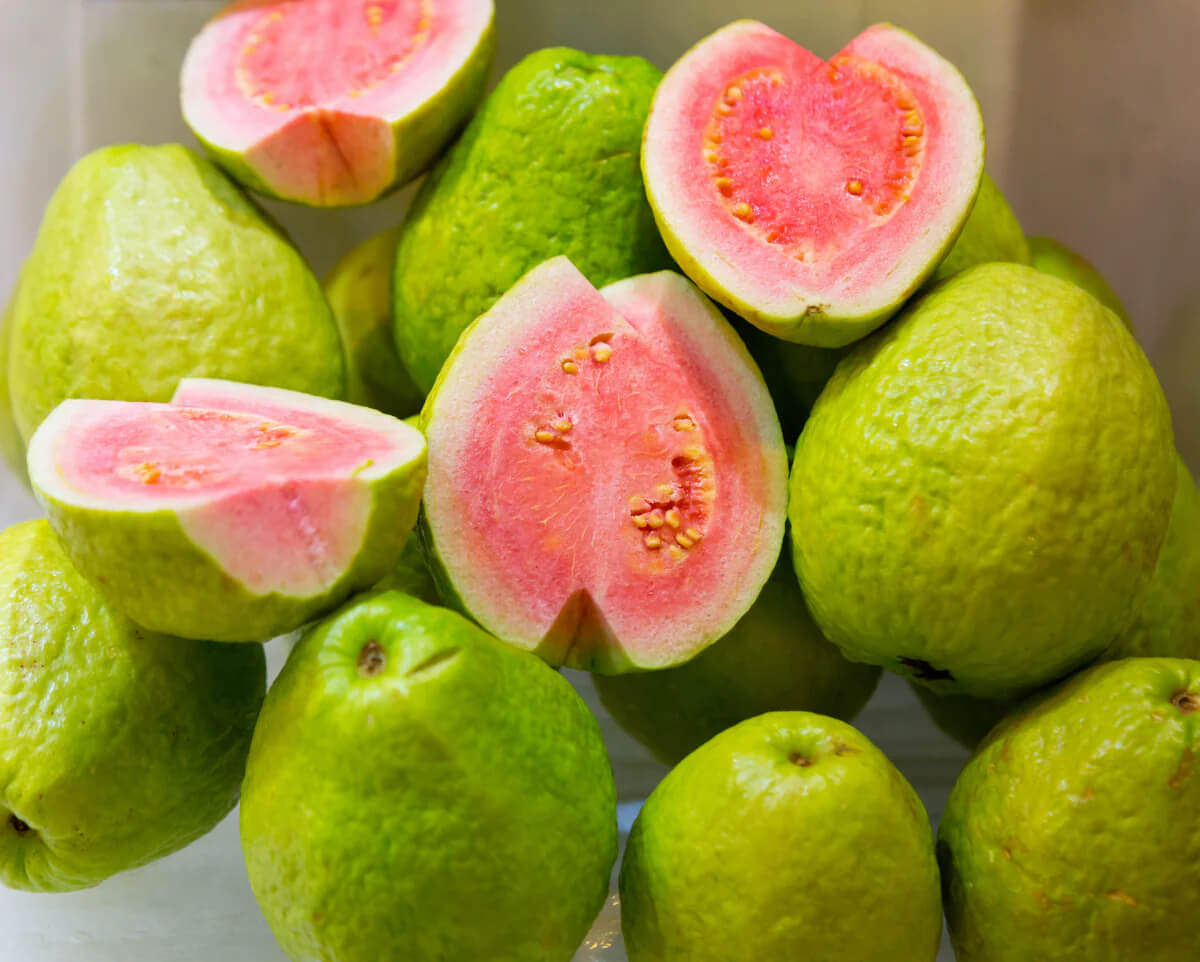Guava Fasting is an interesting concept that involves consuming guavas, either exclusively or as a significant part of the diet, during a fasting period.

Let's dive into the details:
Benefits of Guava Fasting
- Nutrient-Rich: Guava is packed with vitamins and minerals, especially Vitamin C, Vitamin A, folic acid, potassium, and fiber. It supports immune health, skin health, and digestion.
- Weight Loss: The low-calorie, high-fiber content of guava can help in weight management by promoting satiety and reducing overall calorie intake.
- Digestive Health: The high fiber content helps in regular bowel movements and can relieve constipation. The seeds also serve as a natural laxative.
- Blood Sugar Control: Guavas have a low glycemic index, making them beneficial for blood sugar regulation. This is particularly useful for individuals with diabetes.
- Immune Boosting: The high Vitamin C content in guava boosts the immune system, helping to fight off infections and diseases.
- Antioxidant Properties: Guavas are rich in antioxidants like lycopene and Vitamin C, which can help protect against oxidative stress and reduce the risk of chronic diseases like cancer.
Process and Protocols of Guava Fasting
- Duration: A typical guava fast can range from 24 hours to several days. During this time, guavas are the primary or sole food consumed.
- Preparation: Before starting the fast, it’s advisable to reduce intake of processed foods, caffeine, and sugar to prepare the body.
- Consumption: During the fast, guavas can be consumed in their raw form, as juices, or smoothies. It's important to stay hydrated, so water and herbal teas can be included.
- Breaking the Fast: Post-fast, it's essential to reintroduce foods slowly, starting with light, easily digestible foods like fruits, vegetables, and soups.
Types of Guava
- Common Guava (Psidium guajava): The most popular type, with a sweet taste and pink, white, or red flesh.
- Strawberry Guava (Psidium cattleianum): Smaller in size with a flavor reminiscent of strawberries, usually with red or yellow skin.
- Pineapple Guava (Feijoa sellowiana): Not a true guava but often included in the category, with a taste similar to pineapple.
- Apple Guava: A variation of the common guava with a more apple-like taste.
Ingredients and Nutritional Profile of Guava
- Calories: Approximately 68 calories per 100 grams.
- Carbohydrates: Around 14 grams per 100 grams, with dietary fiber contributing about 5 grams.
- Vitamins: High in Vitamin C (up to 4 times the RDI), Vitamin A, and folate.
- Minerals: Rich in potassium, magnesium, and small amounts of iron, calcium, and phosphorus.
- Antioxidants: Contains lycopene, quercetin, and other polyphenols.
Conclusion
Guava fasting can be a beneficial practice for those looking to detox, manage weight, or improve overall health. However, it's important to consult with a healthcare provider before starting any fasting regimen, especially for extended periods. Guavas, in their various forms, offer a wealth of nutritional benefits that can support a healthy lifestyle whether you're fasting or not.
Navaratri is a vibrant nine-day festival celebrated with profound spiritual devotion to Goddess Durga and her nine forms, marked by the ritual of offering *bhog*, or sacred food. These offerings vary daily and are aligned with the attributes of the specific form of Goddess Durga being worshipped, symbolizing devotion and seeking blessings of health, prosperity, and happiness. The preparation and presentation of bhog are acts of gratitude and reverence, transforming the food into *prasad*, imbued with divine grace once offered and consumed by devotees.
Each day of Navaratri highlights a unique form of the Goddess, with specific food offerings that carry deep symbolic meanings. For example, pure ghee is offered on the first day to Shailaputri, representing purity and strength, while coconut is offered to Mahagauri on the eighth day, symbolizing purity and fertility. These offerings not only reflect the spiritual significance but also bring hoped-for blessings such as longevity, peace, success, and fulfillment of desires.
The ritual of offering bhog transcends traditional devotion, embodying universal values of selflessness, nourishment, and connection with the divine. Observing fasting and offering sattvic foods devoid of impure ingredients amplify the spiritual connection. Thus, the practice of bhog during Navaratri is an essential expression of love and reverence towards the divine feminine energy of Goddess Durga, inviting peace and prosperity into the lives of the devotees.
Navaratri, a revered nine-day festival dedicated to Goddess Durga, is marked by profound spiritual devotion through fasting, rituals, and the sacred offering of *bhog*. This traditional practice involves presenting specific foods to appease and honor the goddess, aligning with the unique characteristics of each of her nine forms worshipped daily. The offerings are more than acts of devotion; they are believed to attract the Goddess’s blessings of health, prosperity, and happiness to her devotees.
Each day of Navaratri involves a distinct bhog that connects to the attributes of the Goddess being venerated. From the purity of ghee offered to Shailaputri on the first day to the knowledge symbolized by sesame seeds given to Siddhidatri on the last, these offerings reflect depth and symbolism. Furthermore, the ritual transforms the bhog into *prasad*, imbued with divine energy, and is shared among devotees as a sacred nourishment that embodies the blessings of the Goddess.
The practice of offering bhog during Navaratri encompasses universal spiritual values such as selflessness, gratitude, and the nourishment of the soul. Beyond the rituals, it represents a symbolic gesture of connecting with divine abundance, reinforcing the spiritual bonds between humans and the transcendent. This age-old tradition, with its deep-rooted significance, continues to be a cornerstone of devotional expression and spiritual enrichment during the festival.
Read more...
